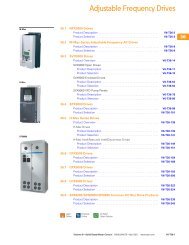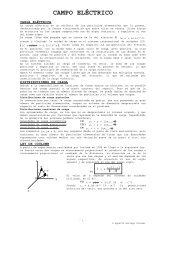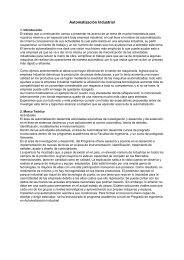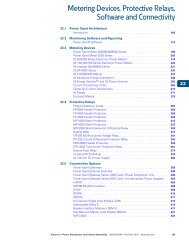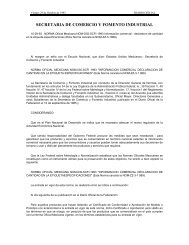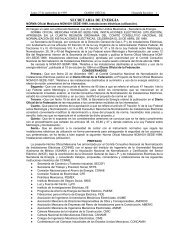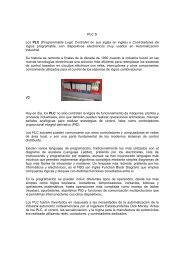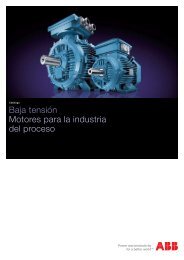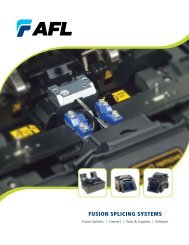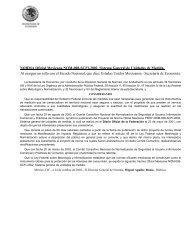Untitled - Mercado-ideal
Untitled - Mercado-ideal
Untitled - Mercado-ideal
You also want an ePaper? Increase the reach of your titles
YUMPU automatically turns print PDFs into web optimized ePapers that Google loves.
Indoor/Outdoor Loose Tube Cable<br />
Indoor/outdoor stranded loose tube combines the robust mechanical and environmental<br />
characteristics of an outside plant cable with the flexibility of an inside plant riser cable.<br />
By installing indoor/outdoor stranded loose tube, costly splice locations entering into a<br />
building are avoided, being routed directly from the outside plant to telecommunications<br />
closets, or main distribution frames (MDF) through the riser of a building and eliminating<br />
the “50-foot rule.” Indoor/Outdoor Stranded Design loose tube cable is moisture and U.V.<br />
resistant, S-Z stranded for easy mid-span access, listed for OFNR use per UL standards,<br />
and can be used in both duct and lashed applications.<br />
Applications<br />
• Building Interconnections (Campus LAN)<br />
• Trunking Lines Direct to<br />
Telecommunications Closet<br />
• Local Loop<br />
• Distance Learning<br />
• Distribution<br />
• Intrabuilding Backbones<br />
• MSHA Approved for Mining Applications<br />
Temperature Range<br />
Operating - 40ºC to + 70ºC<br />
Storage - 40ºC to + 75ºC<br />
Installation - 30ºC to + 70ºC<br />
Cable Components<br />
Typical Lengths<br />
Maximum Lengths*<br />
FIBER<br />
SINGLE-MODE<br />
MULTIMODE<br />
COUNT<br />
feet meters feet meters<br />
6 - 96 26,200 8,000 26,200 8,000<br />
108 - 144 22,900 7,000 22,900 7,000<br />
* Longer lengths may be available.<br />
PVC jacket<br />
strength elements<br />
binder<br />
water blocking system<br />
FRP central member<br />
optical fiber<br />
rip cord<br />
gel-filled loose buffer tube<br />
Optical Information<br />
MAXIMUM ATTENUATION<br />
(dB/km)<br />
OVERFILL LAUNCH MIN.<br />
BANDWIDTH (MHz•km)<br />
GIGABIT ETHERNET MINIMUM<br />
LINK Distance (meters)<br />
Fiber Type<br />
850nm 1300nm 1310nm 1550nm 850nm 1300nm 850nm 1300nm<br />
(6) 62.5/125 GIGA-Link 300 3.5 1.2 N/A N/A 200 600 300 550<br />
(8) 62.5/125 GIGA-Link 1000 3.5 1.2 N/A N/A 350 600 500 1000<br />
(5) 50/125 GIGA-Link 600 2.9 0.9 N/A N/A 500 500 600 600<br />
(7) 50/125 GIGA-Link 2000 2.9 0.9 N/A N/A 500 800 750 2000<br />
(L) 50 Laser-Link 300 2.9 0.9 N/A N/A 1500 500 900 550<br />
(9) Single-mode N/A N/A 0.35 0.25 N/A N/A N/A 5000<br />
(K) SM Futureguide SR-15e Bend Insensitive N/A N/A 0.35 0.25 N/A N/A N/A 5000<br />
(ITU G.657.A)<br />
Gigabit Ethernet Minimum Link Distances are based on “bandwidth”/modal dispersion constraints.<br />
Actual link distances may be constrained by attenuation, depending on specific loss budget.<br />
33<br />
© 2002-2009, AFL Telecommunications, all rights reserved. Revision 2, 7.24.09<br />
Specifications are subject to change without notice.



